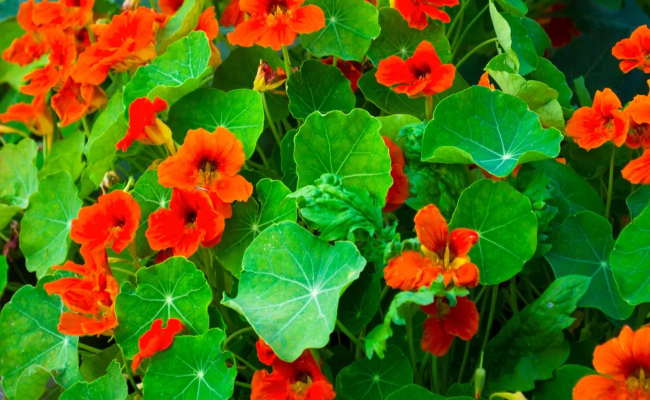Begonia Mallacoota: A Comprehensive Guide to Cultivating and Caring for this Unique Plant
Unlock the Secrets of Growing and Maintaining the Rare Begonia Mallacoota for a Thriving Indoor or Outdoor Garden

Begonia Mallacoota is a rare and striking plant known for its vibrant foliage and unique growth habits, making it a prized addition to any plant enthusiast’s collection. With its beautiful, asymmetrical leaves and the ability to thrive in both indoor and outdoor settings, Begonia Mallacoota requires specific care, including well-drained soil, moderate watering, and indirect sunlight. Whether you’re a seasoned gardener or a beginner, understanding the care essentials of this plant ensures it will flourish and bring a touch of natural elegance to your space.
Introduction to Begonia Mallacoota
The Begonia Mallacoota is a captivating plant species known for its distinctive foliage and resilience. Originating from the lush environments of Southeast Asia, this begonia has made its way into homes and gardens around the world. Its ability to adapt to various environments, coupled with its unique aesthetic appeal, has made it a favorite among plant enthusiasts.
The Origins and History of Begonia Mallacoota
Understanding the origins of Begonia Mallacoota is crucial to appreciating its unique characteristics. Native to the tropical regions of Southeast Asia, this plant has evolved in diverse climates, from the humid rainforests to cooler mountainous regions. Its adaptability is a testament to its resilience, making it an ideal choice for both indoor and outdoor gardens.
A Closer Look at the Foliage
The foliage of Begonia Mallacoota is its most striking feature. The leaves are typically asymmetrical, with vibrant hues ranging from deep green to shades of red and purple. The texture of the leaves can vary from smooth to slightly hairy, depending on the plant’s environment and care. These unique characteristics not only make the Begonia Mallacoota a visual delight but also a conversation starter among plant lovers.
Ideal Growing Conditions for Begonia Mallacoota
To ensure your Begonia Mallacoota thrives, it’s essential to replicate its natural habitat as closely as possible. This plant prefers well-drained soil that retains moisture without becoming waterlogged. A mixture of peat, perlite, and compost is ideal for providing the right balance of nutrients and drainage.
Light Requirements
Begonia Mallacoota flourishes in bright, indirect light. Direct sunlight can scorch its delicate leaves, leading to discoloration and potential damage. If growing indoors, placing the plant near a north or east-facing window will provide the right amount of light. Outdoors, it should be positioned in a shaded area where it can receive filtered sunlight.
Watering and Humidity Needs
Watering is a critical aspect of Begonia Mallacoota care. The soil should be kept consistently moist but not soggy. Overwatering can lead to root rot, which is a common issue with this plant. It’s best to water the plant when the top inch of soil feels dry to the touch. Additionally, this plant thrives in high humidity, so misting the leaves regularly or placing a humidifier nearby can help maintain the ideal moisture level.
Propagation Techniques for Begonia Mallacoota
Propagating Begonia Mallacoota is a rewarding process that allows you to share this beautiful plant with others or expand your own collection. There are several methods for propagating this plant, each with its own set of advantages.
Stem Cutting Propagation
One of the most common methods of propagating Begonia Mallacoota is through stem cuttings. To do this, select a healthy stem with several leaves and cut it just below a node. Place the cutting in water or directly into a pot with well-drained soil. If using water, wait until roots develop before transferring the cutting to soil. This method is straightforward and often results in a high success rate.
Leaf Cutting Propagation
Another effective method is leaf cutting propagation. Cut a healthy leaf from the plant, ensuring that a small portion of the stem is attached. Place the leaf on moist soil, making sure the stem is in contact with the soil. Over time, roots will develop, and a new plant will emerge from the base of the leaf.
Division Propagation
Division is another propagation technique, particularly useful if your Begonia Mallacoota has become large and needs to be divided. Carefully remove the plant from its pot and gently separate the root ball into smaller sections, each with its own set of roots and leaves. Replant these sections in individual pots with fresh soil to encourage new growth.
Common Pests and Diseases of Begonia Mallacoota
Like all plants, Begonia Mallacoota is susceptible to pests and diseases. Being aware of these potential issues and knowing how to address them is crucial for maintaining a healthy plant.
Pests
Common pests that may affect Begonia Mallacoota include aphids, spider mites, and mealybugs. These insects can damage the leaves and stems, leading to stunted growth and unsightly appearances. Regularly inspecting your plant and using insecticidal soap or neem oil can help keep these pests at bay.
Diseases
Fungal infections, such as powdery mildew and botrytis, are common issues for Begonia Mallacoota, especially in humid conditions. These diseases can cause white spots on the leaves or grey mold on the stems and flowers. Ensuring good air circulation and avoiding overhead watering can help prevent these problems.
Seasonal Care for Begonia Mallacoota
Begonia Mallacoota requires different care techniques depending on the season. Understanding these seasonal variations is key to keeping your plant healthy year-round.
Spring and Summer Care
During the growing season of spring and summer, Begonia Mallacoota will be in its most active phase. This is the time to focus on providing ample light, regular watering, and occasional fertilization. A balanced liquid fertilizer applied every four weeks can help promote vigorous growth and vibrant foliage.
Fall and Winter Care
In fall and winter, Begonia Mallacoota enters a dormant phase. Watering should be reduced, and fertilization can be stopped altogether. The plant may lose some leaves during this time, which is normal. Ensure it is kept in a cool, humid environment, away from direct heat sources like radiators or fireplaces.
The Aesthetic Appeal of Begonia Mallacoota in Home Décor
Beyond its botanical characteristics, Begonia is also valued for its aesthetic appeal in home décor. Its vibrant foliage and unique shape make it an excellent choice for adding a touch of nature to any indoor space. Whether placed on a windowsill, used as a centerpiece, or incorporated into a larger indoor garden, this plant brings life and color to any setting.
The Environmental Benefits of Growing Begonia Mallacoota
Growing Begonia Mallacoota is not just about beautifying your space; it also offers environmental benefits. Like many plants, Begonia Mallacoota helps improve indoor air quality by absorbing pollutants and releasing oxygen. Additionally, its ability to thrive in various environments makes it a low-maintenance option for those looking to add greenery to their home without a significant environmental impact.
Conclusion: Why Begonia Mallacoota Should Be in Your Collection
The Begonia is a versatile and visually striking plant that deserves a place in any plant lover’s collection. Its unique foliage, adaptability to different environments, and relatively low maintenance make it an ideal choice for both beginners and experienced gardeners. By understanding its care requirements and potential challenges, you can ensure that your Begonia remains a healthy and vibrant part of your indoor or outdoor garden for years to come.



